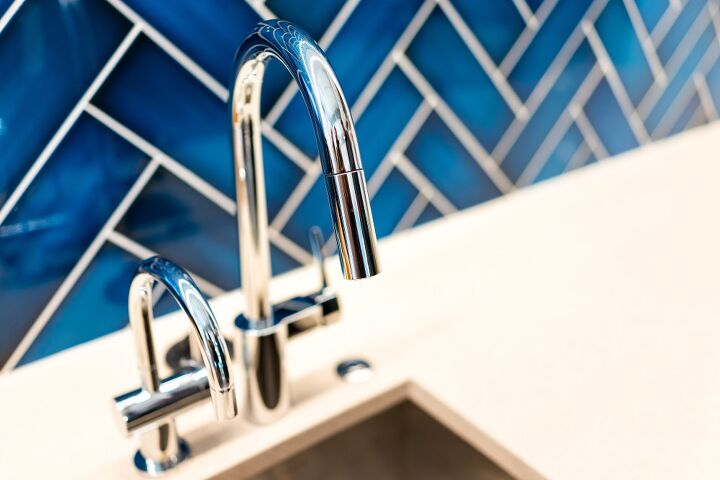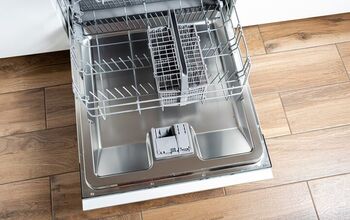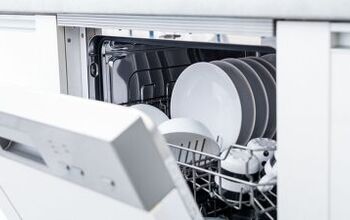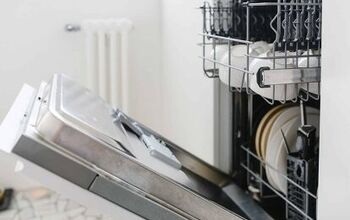What Is An Air-Gap Faucet? (Find Out Now!)

Every homeowner wants clean water, and thankfully we live in an age where even low-quality water can be made close-to-pure because of technology. A reverse osmosis system is an example of such technology, as it’s very good at removing impurities from water.
Many reverse osmosis filtration systems utilize what’s known as an air-gap faucet, and in this post, these faucets will be explained in detail so the reader can know whether such a faucet is right for them or not.
An air-gap faucet is designed to prevent backflow from damaging a reverse osmosis system or contaminating its filter in the event of clogging. Air-gap faucets provide more utility than traditional faucets, but at the cost of a higher price, difficult installation, and noisy operation. Lastly, an air-gap faucet can be swapped out for a traditional one.
What Is a Reverse Osmosis System and How Does It Work?
Before one can understand how an air-gap faucet works, one must understand what a reverse osmosis system is and how it works.
In the reverse osmosis process, contaminants, solid substances, large molecules, and minerals are all removed from water using pressure and specialized membranes. Therefore, a reverse osmosis system is one that improves water quality, making it better for drinking, cooking, etc.
While reverse osmosis systems can be designed in a variety of ways, almost all of them perform the same functions: pre-filtration, reverse osmosis, draining, and storing. A lot of reverse osmosis systems come with an air-gap faucet built-in, but some utilize air-gap alternatives.
How Reverse Osmosis Works
Reverse osmosis requires external pressure to work, whereas osmosis is a passive process. In reverse osmosis, pressure is applied to a highly concentrated solute solution, such as saltwater, so it can pass through a membrane to become a lower concentrate solution.
The membrane allows water to flow through, but it blocks out larger molecules and contaminants. When the reverse osmosis process is finished, one is left with a higher concentration of solute on one side of the membrane and only solvent (freshwater) on the other.
What Is an Air-Gap Faucet?
An air-gap faucet dispenses water just like any other faucet, but what makes this faucet different is the air gap that’s built into its base. This kind of faucet is designed to prevent backflow from affecting the reverse osmosis system, and this backflow prevention comes in the form of an air gap.
Should a reverse osmosis system become clogged, air will enter the system to protect it. On the other hand, a reverse osmosis system that doesn’t utilize air-gap technology could be affected by contaminated water should clogging occur.
How an Air-Gap Faucet Works
When a reverse osmosis system utilizes an air-gap faucet, a physical siphon is created to separate the reverse osmosis system from the sink drain. This siphon is created when water is dropped through the air from one tube to another. Here’s how an air-gap faucet functions from start to finish:
- Drain water is directed upward through a 1/4 inches tube and into a small trough that’s part of the faucet’s base.
- Once the water is in the trough, it then flows to the other side of the faucet stem.
- Next, the water goes through a hole and by force of gravity it drops into a 3/8 inches tube.
- This tube transports the water to the sink’s drainpipe.
What’s Needed to Make an Air-Gap Faucet Work
In order for this process to work, the air-gap faucet must have three tubes: one for the upward drain water; one for the downward drain water; one for the unit’s product water, which is the drinkable water. Also, for an air-gap faucet to work properly, there must be a wide base, and the sink’s hole will have to be larger as well.
It’s important to keep in mind that even a small piece of food or debris could get lodged in the inlet of the drain connection. If this were to happen, it would stop the line and then cause the reverse osmosis unit’s drain water to flow out and into the sink.
Should this problem occur, simply detach the drain line at the bottom and then remove the obstruction.
Air-Gap Faucets vs. Traditional Faucets
Air-gap faucets are different from other faucets in a variety of ways. Faucets that don’t employ an air gap usually send drain water from a reverse osmosis system’s membrane directly into a sink drain. With an air-gap faucet, drain water goes to the bottom of the faucet, where it then flows to the sink drain.
Also, traditional faucets have just a drinking water line connected to them, whereas an air-gap faucet has multiple lines.
Going Back to a Traditional Faucet After an Air-Gap Faucet
If you install an air-gap faucet and you realize this system is not for you, switching back to a more traditional faucet is possible. There are, however, some things to consider before making the switch.
- An air gap faucet uses 1/4 inches tubing and 3/8 inches tubing, whereas a traditional faucet typically just uses 1/4 inches tubing to connect a reverse osmosis system to a sink drain.
- You can convert the tubing yourself or hire a professional to do this. The latter is recommended.
Pros and Cons of Air-Gaps Faucets
An air-gap faucet has a lot of benefits, which explains why it’s a popular upgrade for those who are pursuing a kitchen or bathroom remodel. There are, however, some cons to consider as well. Both are discussed below.
Pro: Reverse Osmosis System Protection
The main appeal of an air-gap faucet is that it can ensure a physical line break, preventing contaminated water from being siphoned back into the reverse osmosis system. This water could either damage the unit or contaminate the membrane. The system is pretty intricate too, so instances of it failing are certainly not often.
Pro: Some Local Plumbing Codes Require Air-Gap Faucets
Some localities require their residents to install reverse osmosis systems that employ air-gap faucets. While these rules are often seldom enforced, they’re in place to serve a public good and protect the citizens from consuming, using, and recycling contaminated water.
Con: Not Immune From Clogging
Because the tubes and trough are small, sediment can build up in both areas and cause the air-gap system to clog. When this happens, water backs up and into the sink. An overflow could result in backflow spilling out onto countertops, appliances, and the floor.
Con: Noisy & Disruptive
When the storage tank is being filled, one may hear a gurgling sound emanating from their air-gap system. This sound can be noisy and disruptive, and there’s really nothing you can do about it. After all, the sound that’s heard is a direct result of the reason why an air-gap system is installed in the first place.
Con: Installation Isn’t Easy
Since there’s extra tubing needed to make an air-gap system work, installation can be a hassle. The tubes are cumbersome too, so that doesn’t make things any easier.
Related Questions
Since air-gap faucets are not the simplest devices in a home, there are many questions about them. Some of these are answered below.
Is water safe to drink if it comes from a reverse osmosis system?Yes! In fact, reverse osmosis water is healthier, as particles, bacteria, and dissolved minerals are absent. Also, harmful contaminants, which are often hard to detect, fail to get past a reverse osmosis system’s filter.
Is an RO system with an air-gap faucet cheaper than one with a traditional faucet?No. Reverse osmosis systems that employ air-gap faucets typically cost more than those which employ traditional faucets, and this is mainly because air-gap faucets make the RO systems more secure.
Final Note
In the end, an air-gap faucet is a crucial component of a reverse osmosis system, as it’s this component that protects the system from harmful backflow in the event of a clog. A reverse osmosis system that employs an air-gap faucet is more expensive than one which lacks it, but the air-gap mechanism serves several useful purposes while possessing only a few minor downsides.
Related Articles

Matt loves everything DIY. He has been learning and practicing different trades since he was a kid, and he's often the first one called when a friend or family member needs a helping hand at home. Matt loves to work with wood and stone, and landscaping is by far his most favorite pastime.
More by Matthew Mountain



























